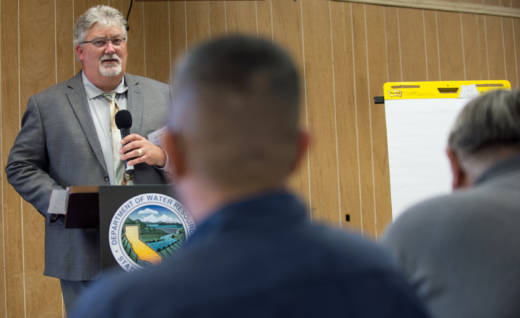Bill Croyle, who took over as chief of the California Department of Water Resources on the eve of February's near-catastrophe at Oroville Dam, is retiring from the agency after six months on the job.
Gov. Jerry Brown appointed Croyle to fill the director's job on an acting basis following the retirement of Mark Cowin in December. In his decade at DWR, Croyle had served as the agency's emergency operations manager and flood operations chief.
On Feb. 7, however, the nature and profile of Croyle's job changed dramatically. The main concrete spillway at the State Water Project's linchpin Oroville Dam began to disintegrate in the midst of a series of major winter storms, touching off a five-day series of events that led to one of the largest mass evacuations in California history.
After the spillway damage was detected, managers at Oroville Dam stopped and started flows down the broken concrete chute to study the effects before allowing substantial flows to resume. Meantime, Lake Oroville filled rapidly and rose toward the top of an emergency weir built to allow water to flow down a steep, unlined, vegetation-covered hillside into the Feather River below.
Croyle and other DWR officials downplayed the potential effects of an overflow, which had not occurred since the dam went into operation in 1968.
